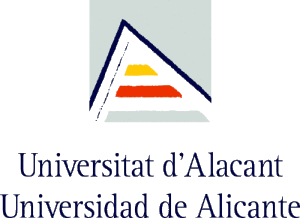
CRREM [Carbon Risk Real Estate Monitor], ULI [Urban Land Institute], Lawrence Berkeley National Laboratory [Berkeley Lab] are partnering to further increase the granularity of the regional US and Canada CRREM pathways.
Austria – March 29, 2023 – Measuring and understanding property related emissions is increasingly important, with the global push toward a more sustainable future gaining momentum. In this context, the CRREM 1.5-degree compliant decarbonization pathways are widely recognized as a global standard to determine a building’s annual target for operational carbon emissions until 2050, for each asset class and geographic market. The adoption of CRREM by investors has grown substantially over the past few years and already surpassed $1.3T AUM.
CRREM, ULI, and Berkeley Lab are partnering to propose a more detailed set of CRREM pathways for North America and to raise more awareness of the need for decarbonization among real estate stakeholders in this region. A working group has been established to support the project, chaired by Elena Alschuler, Americas Head of Sustainability at LaSalle Investment Management. Throughout 2023, the partners will collect feedback from the real estate industry to enhance the pathways’ utility by incorporating the most reliable and updated regional data sources and features specific to the United States and Canada. All real estate stakeholders in the U.S. and Canada are invited to join the working groups here. This approach will ensure the scientific rigor and robustness of the CRREM pathways for North America. The collaboration seeks to release its output by summer 2024.
Prof. Dr. Sven Bienert, Founder and Managing Director of IIÖ: “Our latest pathways’ update demonstrates that CRREM can effectively address regional peculiarities and engage with local stakeholders. It’s possible to have standardized global methods that also align with local needs. In 2023, we are excited to work alongside our key partners in North America to further advance in this direction.”
Blakely Jarrett, Senior Director at ULI Greenprint Center for Building Performance: “ULI is pleased to convene a broad group of real estate stakeholders to provide input on how CRREM can enhance its decarbonization curves to reflect the diverse conditions across the U.S. and Canada. The CRREM curves are an important tool in the real estate sector’s decarbonization efforts.”
Joshua Kace, Senior Program Manager at Lawrence Berkeley National Lab: “Berkeley Lab is excited to support the ULI and CRREM teams in the development of enhanced CRREM pathways for North America; There is tremendous potential to help drive real impacts across the built environment with new pathways suited to the North American market.”
Elena Alschuler, Americas Head of Sustainability at LaSalle Investment Management: “As investors around the world seek to evaluate property and portfolio-level journeys to net zero, it is critical that there is a common standard by which to measure whether any given property is on track. The real estate industry has a shared interest in ensuring we develop yardsticks that are accurate, effective and easy to use.”
The funding of the updated North American CRREM pathways project was made possible through generous sponsorship from the following organizations representing more than $650 billion in Assets under Management in the US and Canada: BentallGreenOak, CBRE Investment Management, Clarion Partners, LLC, Goldman Sachs & Co., Hines, Ivanhoé Cambridge, LaSalle Investment Management, Manulife Investment Management, Norges Bank Investment Management, Nuveen Real Estate, Prologis, and Tishman Speyer Properties.
About CRREM
The Carbon Risk Real Estate Monitor (CRREM) is the leading global initiative for establishing targets for operational carbon emissions for standing real estate investments consistent with the ambitions of the Paris agreement. CRREM publicly released decarbonization pathways that translate the ambitions of limiting global warming to 1.5°C by the end of the century into regionally- and property-type-specific trajectories against which real estate assets and portfolios can benchmark themselves. The pathways and other resources provided, like the CRREM-tool, to assess asset alignment with relevant pathways, help the market price risks related to carbon emissions from buildings. CRREM carbon pathways are currently being adopted by Measurabl, Verdani, Deepki, MSCI and others and will be integrated into the annual Real Estate Benchmark Assessment of GRESB. Additionally, CRREM has partnered with the Science Based Targets Initiative (SBTi). CRREM was initially an EU project and is now being funded by the Laudes Foundation as well as APG Asset Management, PGGM and Norges Bank Investment Management, and supported by major industry bodies.
Contact: sebastian.leutner@iioe.at
About ULI
The Urban Land Institute is a non-profit education and research institute supported by its members. Its mission is to shape the future of the built environment for transformative impact in communities worldwide. Established in 1936, the institute has more than 45,000 members worldwide representing all aspects of land use and development disciplines. For more information on ULI, please visit uli.org, or follow us on Twitter, Facebook, LinkedIn, and Instagram.
Contact: Blakely.jarrett@uli.org






